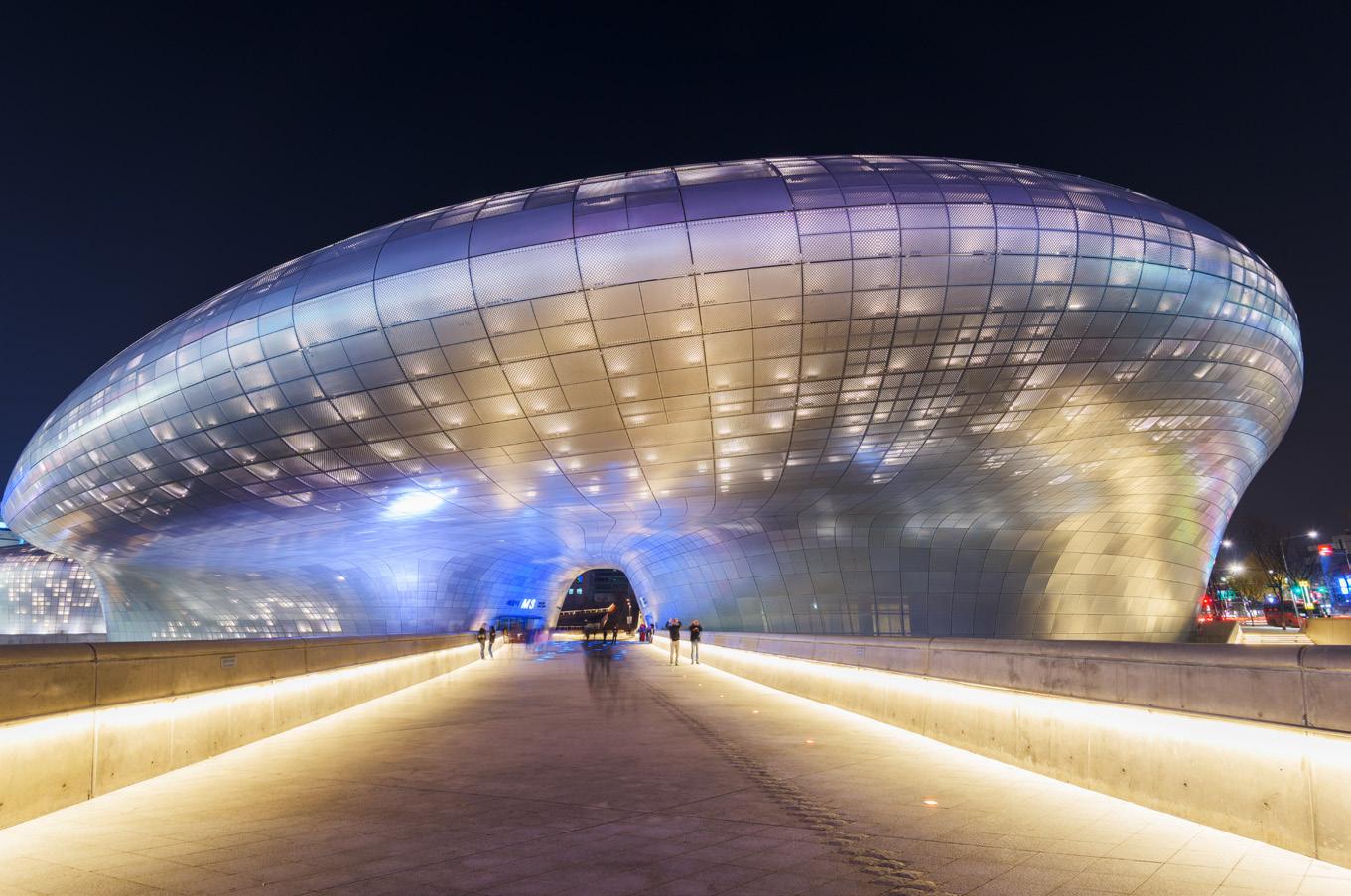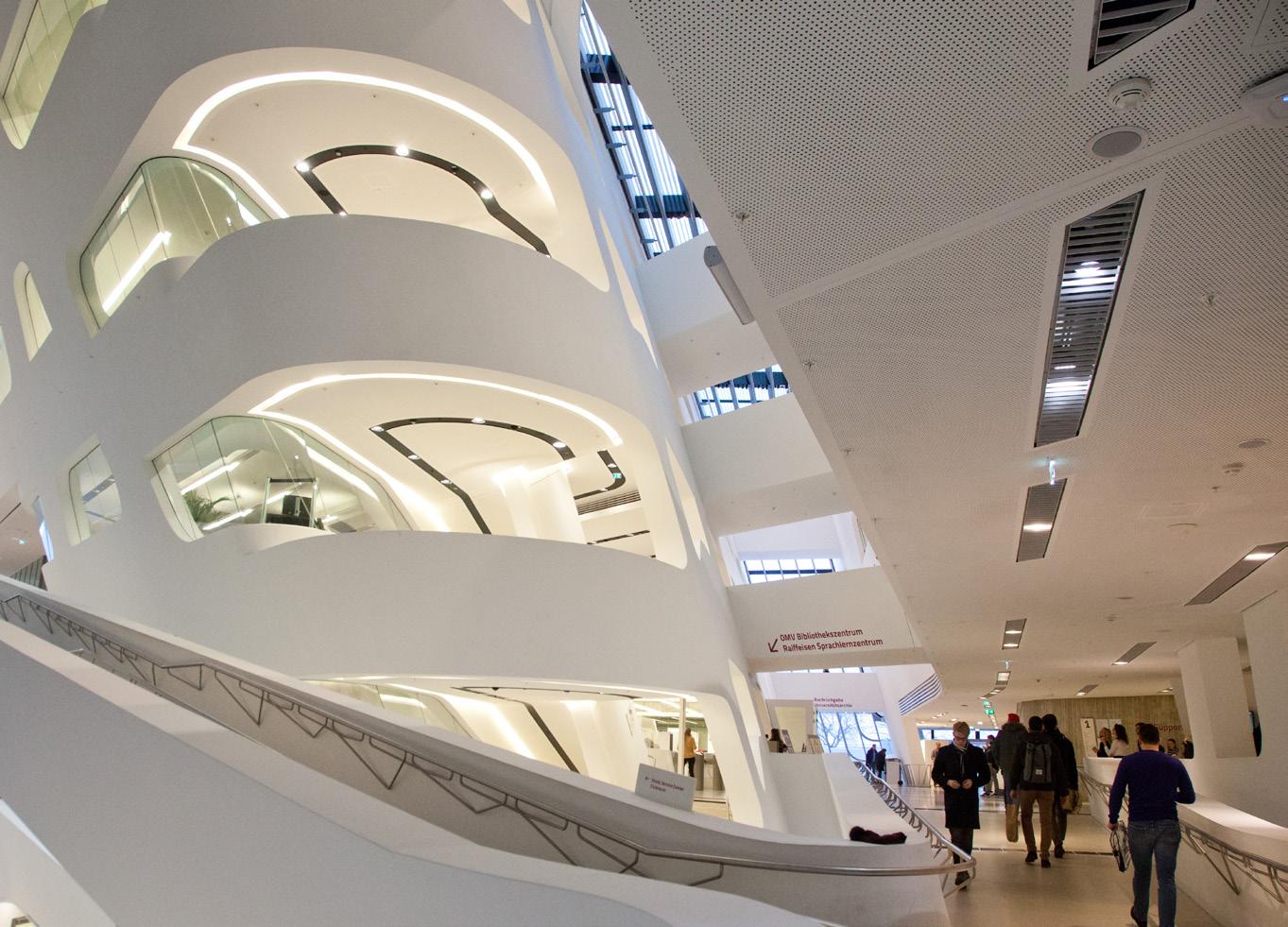
5 minute read
ZAHA HADID A WOMAN’S PERSPECTIVE ON ARCHITECTURE
In a field dominated by men, Zaha Hadid was one of the first women to truly break through and offer a female perspective of architecture – and it shows in the groundbreaking, sensual designs that brought her fame.
WORDS MICHEL CRUZ
Zaha Hadid was the first in many things. The first female ‘starchitect’; the first woman to win the Pritzker Architecture Prize in 2004; the first Middle Eastern designer to join the world’s elite; and among the many titles and prizes she accumulated along the way, also the first and so far only woman to receive the Gold Medal from the Royal Institute of British Architects.
Described by some as the 'Queen of the Curve', Zaha Hadid was not as famous for being a top female architect as she was for her sensually flowing design style, which used organic, rounded lines rather than following the more rigid geometry of her contemporaries. Modern engineering technologies and the new materials and building techniques that followed from them gave her a hitherto unknown canvas of expression, and the Iraqi-born architect made good use of it.

The Beijing Soho complex is a study in Zaha Hadid’s futuristic organic shapes
The world she emerged from was, however, altogether more classical, as born in Baghdad in 1950 she hailed from the successor to some of the earliest civilisations in the world, those of Babylonia,
Mesopotamia and Assyria. She later recalled that childhood visits to ancient Sumerian sites in southern Iraq created the spark that made her want to pursue a career in architecture, and though she studied mathematics at the American University of Beirut, she went on to the Architectural Association School of Architecture, in London.

Modern styling the Zaha Hadid way – Dongdaemun Design Plaza
There her lecturers were none other than Rem Koolhaas, Bernard Tschumi and Elia Zenghelis, who all spoke of her in wondrous, glowing terms. They remembered Hadid not so much as an A-student, but as a singular talent with a vision born out of a unique aptitude. Not interested in details she could later fix, Zaha stood out early on for her conceptual thinking, her out-of-thebox exploration of styles and forms, and her ability to bring them to life in detailed sketches and painting. Here, her daydreams took shape and had the capacity to stir emotions in others too.

The future is here at the Serpentine Sackler Gallery, in London’s Kensington Gardens

A skyscraper with the Zaha Hadid seal in the new City Life District of Milan
THE MAKINGS OF A FUTURE STAR
Drawing inspiration from many and wide sources, Zaha Hadid was the kind of architect who left an impression, so upon graduation she was invited by her former lecturers, Koolhaas and Zenghelis, to work at their Office for Metropolitan Architecture in Rotterdam, where she honed her craft in a practical working environment. In the 1980s she took British citizenship and opened Zaha Hadid Architects in London, struggling at first to find suitors for her surrealistic avant-garde designs in a postmodernist world. The result was a period of time spent lecturing at the likes of Harvard, Cambridge University, Columbia and the Hochschule für Bildende Künste in Hamburg.

The futuristic ambience of the Shanghai Soho mixed use complex designed by Zaha Hadid
During this period some of her artwork was even exhibited at the MOMA in New York, but it was only with a slow change in tastes that her fortunes altered, and in 1991 Zaha Hadid’s first signature project was commissioned. The Vitra Fire Station in Weil am Rhein, Germany, formed the first of many works that soon blossomed out of Europe to also envelop North America and Asia. While her early design was more jagged, angular and muscular in its use of concrete, the new millennium saw a gradual evolution of style and the first glimpses of the flowing, almost rolling lines that she has since become associated with. Museums, railway stations, offices and similarly impressive buildings took form in this mould, including a seminal bridge pavilion in Zaragoza and the exquisite Guangzhou Opera House in China.

Proof that futuristic architecture can be beautiful and engaging – the Library and Learning Center at the Vienna University of Business and Economics
AND SENSUAL ARCHITECTURE
By 2012 – the time of the London Olympics, for which she designed the eye-catching Aquatics Centre, Zaha Hadid’s international reputation was well and truly established, and she had become the first female starchitect on the firmament of stellar names such as Foster, Nouvel, Gehry, Calatrava and Koolhaas, her former professor. The pupil had become the master, and now elevated by Queen Elizabeth II to the title of Dame, the big-ticket commissions came rolling in.

The moulded forms of a skylight in the Serpentine Sackler Gallery
Zaha Hadid now had the pick of the world’s exciting projects, and it shows in creations such as the enigmatic Galaxy SOHO multiuse complex in Beijing, whose mesmerising curvilinear forms appear to roll out in a continuous, uninterrupted flow. This endows the structure with a harmonious fluidity and unity that is coherent, pleasing and unique.

Even the stairs are free to cascade and flow down at the Heydar Aliyev conference and cultural centre in Baku
Another classic example of organically flowing design of great sensuality is the Heydar Aliyev Center in Baku, Azerbaijan, almost the closest she came to creating a great urban project in the land of her birth. Though the Library and Learning Center of the Vienna University of Economics and Business was more linear in style, its interior treatment is typical of the fluid design concept of Hadid, and the sensory impact it evokes.
Even when working on a design plaza in Seoul, she added organically flowing shapes, though towards the latter part of her career – which was cut short – there was a further evolution into a blend of softer-edged and jagged angles, a sort of distillation of what had gone before. This was evident in future classic designs in China and Hong Kong, which were to be among her last works.

Avant-garde styling of the Beijing Dax Airport Terminal
We would have gone on to enjoy many more of her imaginative creations, but in 2016 Zaha Hadid passed away at the age of 65 from a heart attack. She left behind not just a wonderful oeuvre of architectural work and ground-breaking edifices such as Beijing Daxing International Airport, but also a large body of artwork, industrial design, furniture and interior styling. Upon the completion of one of her last contracts, the Salerno Maritime Terminal in Italy, posters of Zaha Hadid were hung across the city, reading: “Goodbye Zaha Hadid; Genius and Modernity, Inspiration and Transformation, Light That Takes Shape.” It seems a fitting testament to one of the leading designers of our time and the first woman to break into the architectural mainstream.










